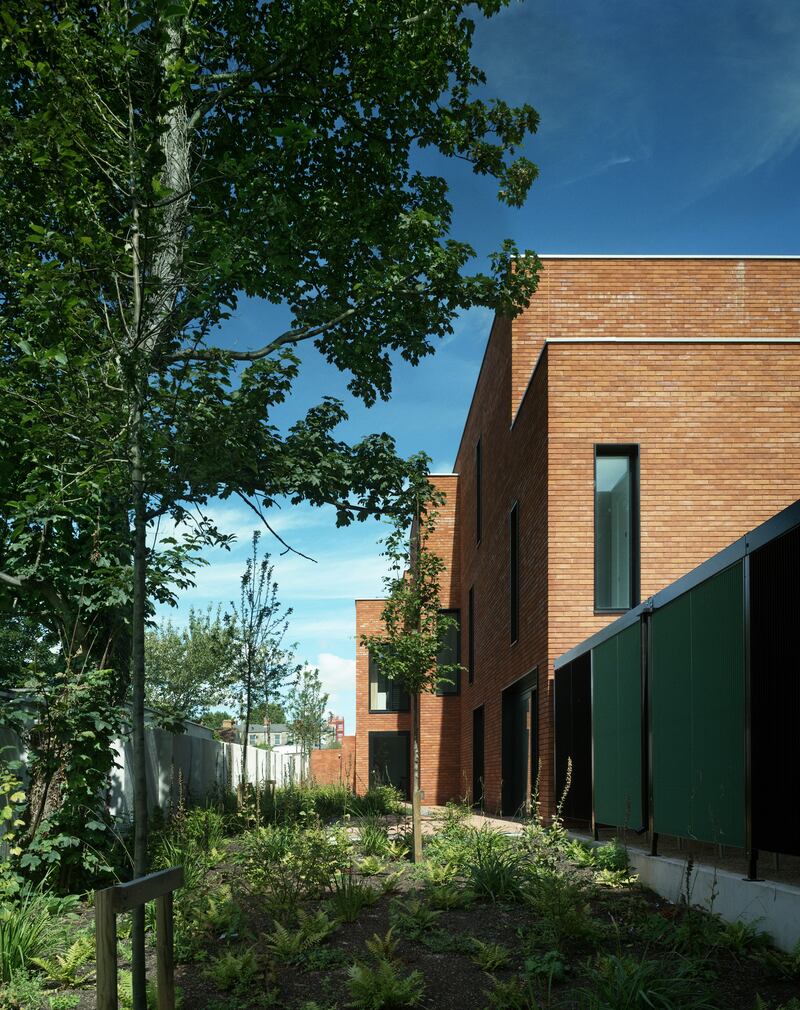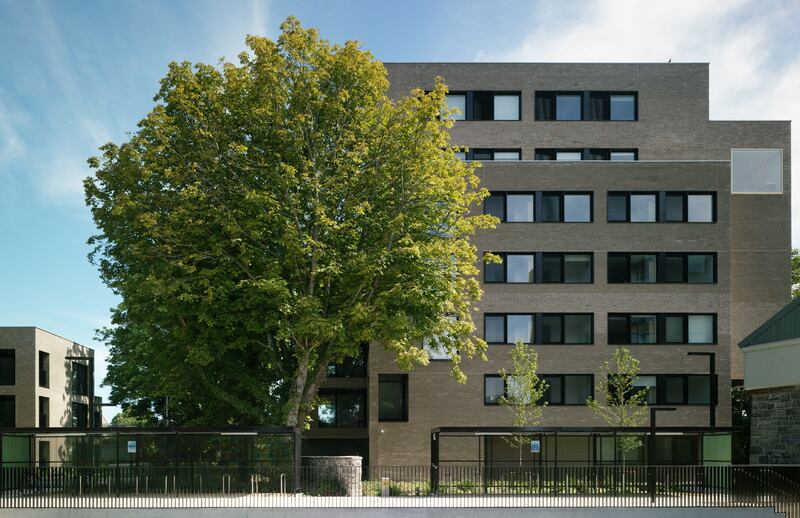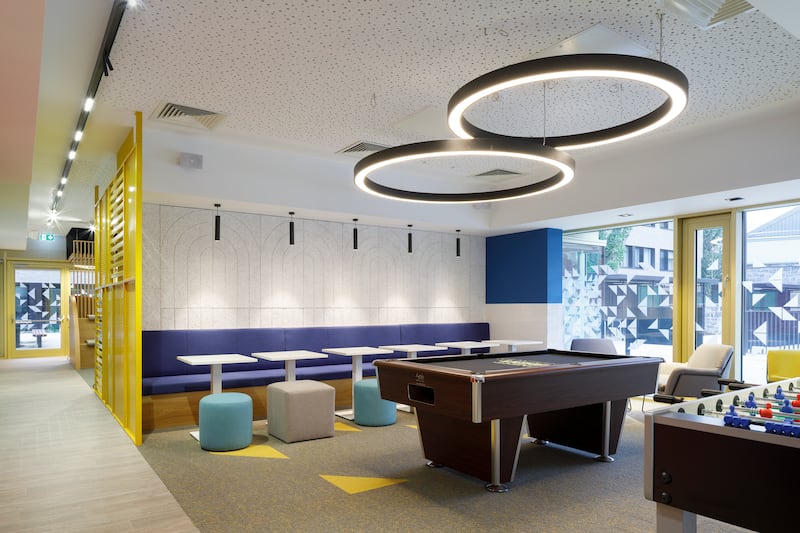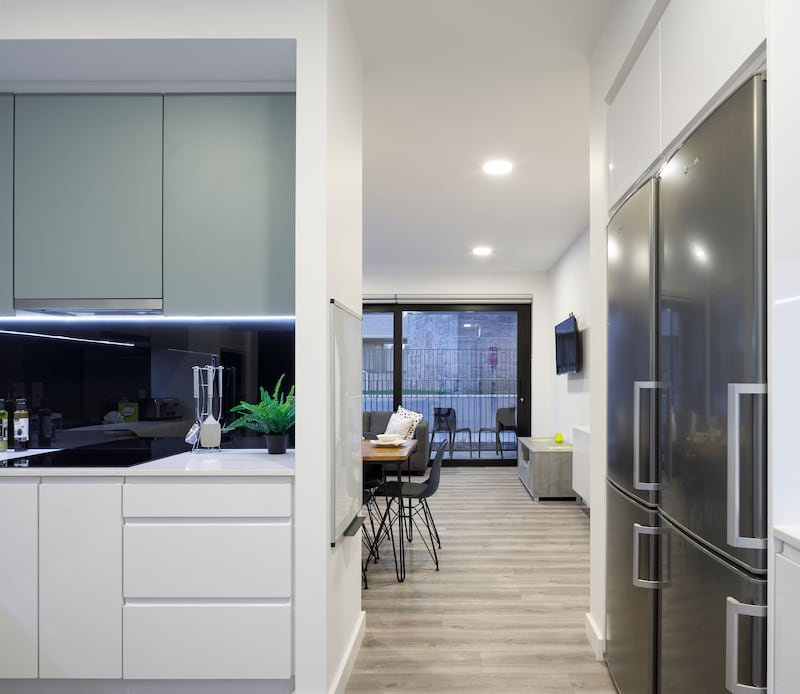Climate change, supply-chain shortages and the omnipresent rumblings of catastrophic collapse: it can be hard to stay positive sometimes. Equally, anyone justifiably troubled by the state we’re in can find themselves paralysed by conflicting messaging. Is it better to drive the car you have, or cough up for a new electric one, even though your current vehicle has at least five more years under its bonnet? And what about all the stuff that goes into batteries?
It’s a similar story with building. Retrofit or rebuild? Circulate air or throw the windows wide? Timber frame or concrete? Established last year by Acclaim Awards, publishers of the Royal Institute of the Architects of Ireland’s Architecture Ireland, the Towards Net Zero Construction Awards aim to champion those leading the way in low-energy building and highlight examples that might teach us all a thing or two.
Winner in the 2022 housing category is Highfield Park, a student accommodation campus which was completed in 2020 and comprises 402 bedrooms and associated amenities: gym, study, communal kitchens and so on. It is sited in a series of apartment blocks, with the aim of creating a village-type feel on its 3.37 acre site just off the North Circular Road. It’s on a typical “back lands” site, with which all cities abound, and award winners DTA Architects have done an excellent job putting it all together.
As DTA’s Niall Rowan says, a project such as this also answers the question of whether it’s better, from an embodied carbon point of view, to renovate or build from scratch. Embodied carbon is essentially a measure of all the energy and materials it took to make something; and so it might seem like a no-brainer to just insulate what we have already and leave the rest alone. As with almost everything, the truth is a little more complicated.
READ MORE
“Fundamentally it’s better to retain buildings,” says Rowan, but the reality is that when you’re looking at a site, they’re often such low density that they’re not suitable to be repurposed. “Density,” he says, “is fundamental to the discussion on long-term sustainability and, in its widest sense, of urban sprawl.” And while high density obviously makes sense from a developer’s point of view, it also makes sustainable sense, as accommodation can be clustered around public transport and other services. Highfield is adjacent to the Luas, and has plenty of bicycle parking.


Car parking has been reduced, with the stated aim of encouraging public transport use. It’s another one of those examples that make you feel a bit iffy about developer-driven sustainability – in that obviously fewer parking spaces means more room for accommodation and therefore profit. On the other hand, perhaps profit is the only way to make some personality types quite literally buy into supporting green developments. Do that too much, however, and we run the risk of only ever understanding environmental issues in economic terms.
Parking spaces aside, there are a lot of interesting examples within Highfield Park that can be borne in mind, or adapted for buildings of any scale. “Good design has always been sustainable,” says Amanda Bone, a consultant with DTA Architects, who also represents her own firm as a judge on RTÉ’s Home of the Year. She agrees that changes in technology and materials have made it possible to build more energy-efficient buildings, but she underlines that well-thought-out buildings that take into account layouts, orientation and use of natural light – they were there “since day one”.
Rowan adds that in fact there was a design period, “let’s say 10 years ago, where it almost became an architectural style, or a fashion to show that you were being ‘sustainable’, by having a lot of the paraphernalia and design motifs that were virtue signalling you had a sustainable building”. He’s talking about those buildings with wooden shutters and lattices over their windows, among other things. “The big change,” he continues, “is that now the onus is on every designer and architect to integrate sustainable measures.” These include systems such as heat recovery, which takes heat from areas such as kitchens and bathrooms and feeds it into other parts of the house. Less obvious are details such as understanding how elements of buildings can conduct cold temperatures from outside in, so barriers are now incorporated between beams and trusses, and external walls.
Leanne Martin, a director with DTA, notes that we have come to realise that sustainability is holistic and that the success of Highfield Park is across a spectrum of choices, and not simply because of a single earth-shattering innovation
Complexities remain. The windows at Highfield are made from recyclable aluminium, but will they be recycled? Perhaps it depends where we are at the end of the 60 to 100 years, which Rowan reckons is the average life of a building. Good design of course lasts longer as it incorporates flexibility, and it is interesting to remember that the Georgian squares and streets for which Dublin is so famous were originally built on leases that ran from between 40 and 100 years; so the idea of recycling building land is nothing new.


An interesting graphic, created for the Net Zero awards judges, shows the relative amounts of carbon embodied in the Highfield Park building project. Roofs and doors account for relatively little, as does waste water drainage (enabled by flat sedum-planted roofs) and frost insulation. External walls are pretty high, but topping them all is floor slabs, which are concrete. Concrete has recently been outed as a baddy in terms of carbon, not least because of the very high temperatures it takes to create it.
“That is a constant argument,” says Bone. “But at the moment the majority of timber being used in timber-frame construction, it is actually being imported from New Zealand.” She goes on to expand on how carbon conditions in countries differ: we don’t have sufficient timber but we do have plenty of the raw materials for cement.


You could go around in circles forever, but thinking moves on. At one time it was considered sustainable to have airtight houses with air circulation systems. Now, Covid as much as anything else, has reminded us of the efficacy of opening windows. Leanne Martin, a director with DTA, also notes that we have come to realise that sustainability is holistic and that the success of Highfield Park is across a spectrum of choices, and not simply because of a single earth-shattering innovation. Its wise design also includes space for trees and greenery on site, as well as materials and technologies.
Apartment living, she notes, is one of the most sustainable ways of building. The problem is that in Ireland we have clearly missed a boat or two. This is largely due to the fact that back in 1990s and early 2000s, apartments were built as temporary homes, rather than a reasonable option for long-term family life. As a result, many schemes were cheap, shoddy and compromised, and people began to see apartment living itself as being just that – which may also make you have qualms about today’s buy-to-rent schemes. But go to any European capital and see how positive and sustainable city-centre apartment living can be. Highfield may be student accommodation but look closely and you’ll find that many of its features could be a template for good design for many years to come.
Established as Derek Tynan Architects in 1991, DTA Architects is also a three-time winner of the RIAI Silver Medal Award for Housing. dta.ie
Winning Designs
There were six categories in the inaugural Towards Net Zero Awards.
Retrofit of a Building was won for the Willows by Peter Nickels Architects
Best Commercial Building was the ESB Offices, Commercial Block by BDP
Best Public Building was Donegal town Garda station by Rhatigan Architects, which also won Best Design Practice
And the Net Zero Champion was Tomás O’Leary of MosArt













